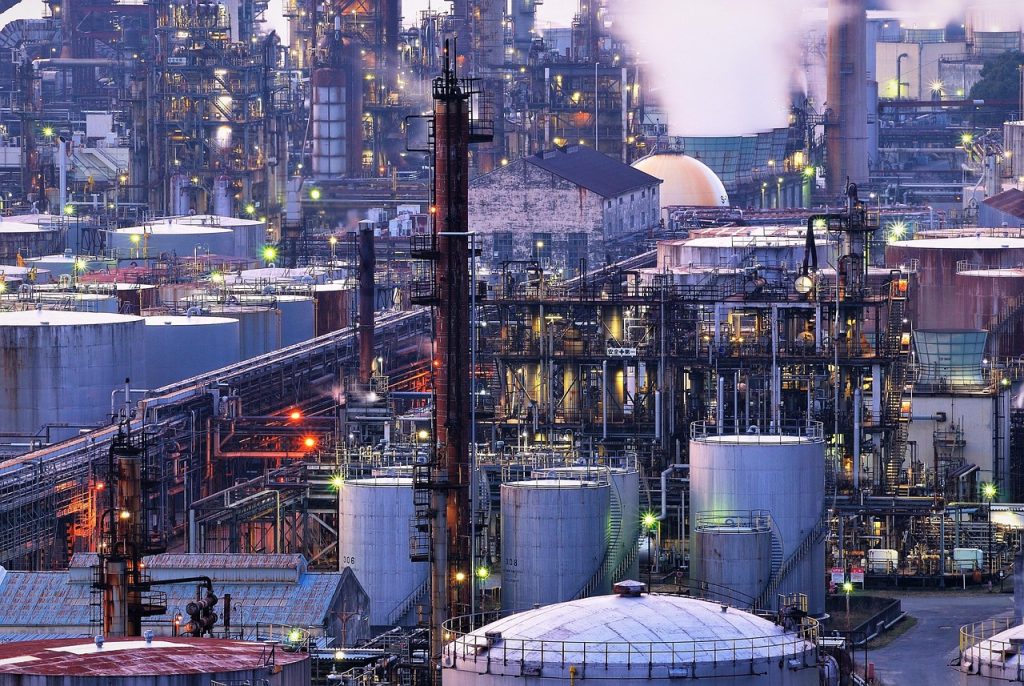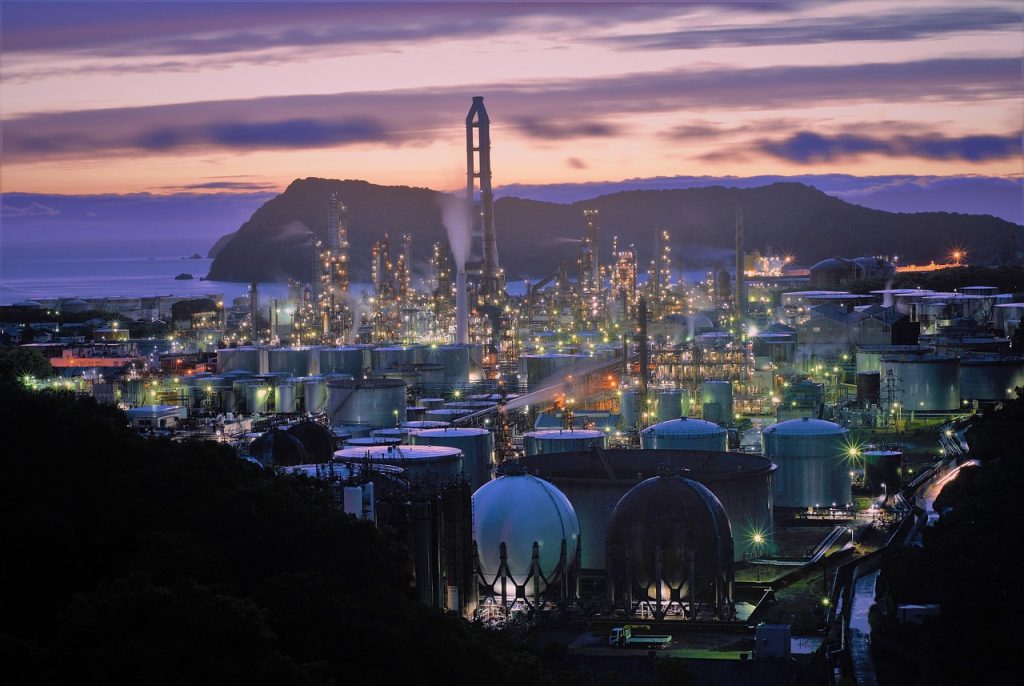Why is it necessary to prevent dust explosion? and Five measures to prevent dust explosions
According to relevant statistics, from 1900 to 1956, a total of more than 1,000 dust explosion accidents in the United States, Japan from 1952 to 1979, more than 200 such accidents. In China, in 1942, the Benxi coal mine coal dust explosion accident, 1987 Harbin flax factory dust explosion accident, 2010 Qinhuangdao Lixi Hua starch company “2-24” major dust explosion accident, 2014 Suzhou Kunshan Zhongrong “8-2” special major explosion accident, etc., the loss of money. In 2014, Suzhou Kunshan Zhongrong Company “8-2” special major explosion accident, etc., the losses and lessons are very heavy. Therefore, enterprises should attach great importance to the fire and explosion hazards of dust.

I. Mechanism of dust explosion
Dust is a tiny particle of solid material, its surface area is much larger compared with the same weight of lumpy material, so it is easy to catch fire. When the dust is suspended in the air and reaches a certain concentration, an explosive mixture is formed, and when it encounters a heat source (such as an open flame or high temperature), the flame spreads instantly throughout the entire space of the mixed dust, and the chemical reaction is extremely fast, while releasing a large amount of heat to form a very high temperature and a great deal of pressure, which has a strong destructive force.
A dust explosion requires the fulfillment of the following five conditions: combustible dust, dust cloud, ignition source, accelerant, and confined space.
Factors affecting the dust explosion include: the size of dust particles, the heat of combustion of dust, dust concentration, environmental conditions, turbulence, the degree of dispersion of dust.
II. Measures to prevent dust explosions
(i) Control of combustible dust generation and concentration
1. Prevent leakage of materials and dust.
Repair equipment with material leaks in a timely manner, and inspection holes in process equipment should be sealed.
2. Reduce the concentration of dust.
Dust collector is an important equipment to reduce the concentration of combustible dust, 40% of dust explosion accidents are caused by dust collection system, must pay attention to the design and maintenance of dust collection system.
(1) Design of dust removal system. Prevent dust deposition in the duct, first of all, the wind speed design should be reasonable, to ensure that the dust pipeline wind speed is basically the same everywhere, from the point of dust suction to the dust collector wind speed should be unchanged or slightly increased; Secondly, is the design and installation of dust pipeline to reduce the loss of resistance, and try to minimize the length of the horizontal pipeline; Finally, to carry out the determination of wind speed and pressure balance adjustment to ensure that the air volume and wind speed in line with the design requirements.
(2) The dust collector should consider explosion-proof measures. Take measures such as anti-static filter bags and explosion-proof fans.
(3) Frequently check the dust pipe wind speed, pipe clogging, dust collector filter bag filtration and other conditions. Install wind pressure monitoring instrument on the dust collector to assist in judging the clogging or breakage of the dust collector filter bag.
(4) The design water consumption and flow rate of the wet type dust collector shall be able to completely filter the dust sucked into the dust collector from the air duct, and a monitoring and alarming device shall be set up to continuously monitor the water consumption and flow rate.
(5) Dry dust collector inlet duct should be set up at the explosion relief device, inlet and outlet should be set up to monitor the wind pressure difference alarm device, and set up air pressure blowback type filter bag cleaning system.
(ii) Control and elimination of ignition sources
1. Prohibit the use of hot elements of electric heating appliances in explosion hazardous areas.
Such as electric casting, stainless steel electric heating plate, electromagnetic induction heating device, electric heating tube, electric hot wire, electric heating plate, electric heat tape, electric heating coupling, electric heating rod and so on.
2. Adopt explosion-proof electrical equipment of appropriate level.
Electrical equipment shall be selected and installed in accordance with relevant national standards and requirements; electrical lines and power-using equipment in the hazardous area of dust explosion environment shall be equipped with short-circuit and over-load protection; the metal casing of the equipment, racks and pipelines shall be reliably grounded, and the connections shall be spanned when there is insulation to form a good path without interruption; when insulated wires are used for the electrical lines in the hazardous area of dust explosion environment, the wiring shall be made of steel pipes.
- Open flames should not be present in dust explosion hazardous areas.
When pyrotechnic operations are required, they shall be managed in accordance with pyrotechnic operations and a pyrotechnic approval work permit shall be obtained before operation. The maximum permissible surface temperature of equipment or devices in direct contact with dust (e.g. motor casing, drive shaft, heating source, etc.) should be lower than the lowest ignition temperature of the corresponding dust.
(iii) Electrostatic protection technology
1. Reduce friction.
Use conductive tape as much as possible for belt drive, and it is better not to use belt drive when conveying flammable and explosive objects. The flow rate of flammable and explosive objects in the pipeline should be controlled. At the same time, but also consider the pipeline material and other factors. The exit of the pipeline is a serious area of electrostatic hazards, powder mill supply flow should be uniform, to prevent breakage and idling.
2. Static grounding.
Static grounding is conditional, not all objects charged can be solved with the help of grounding. Electrostatic grounding resistance should be mastered between 10~1000 ohm, and for containing non-metallic components (such as plastic) should be smaller. Powder industry static accidents occur in the particle size of less than 100µm dust, the finer the dust, the slower the transmission speed should be. The inner wall of the pipe in pneumatic conveying must be smooth and clean, and the dust catcher bag should be cotton or conductive fabric. Humidification is allowed to increase the air humidity to more than 65%. Conveying equipment to use rolling bearings, bearing oiling port should be dust-tight, bearing seat surface should be clean, anti-dust accumulation. All conveying equipment should be reliably grounded. Pneumatic conveying pipeline should also be conductive material, take over the flange should have static electricity across the connection.
(iv) Explosive isolation and containment
1. Mechanical isolation:
Separate dust from possible ignition sources by means of physical isolation. For example, equipment susceptible to dust generation is set up in separate isolation using specialized protective enclosures, local exhaust hoods or dust extraction devices.
2. Chemical isolation:
Reducing the oxygen content in the system by injecting inert gases (e.g. nitrogen, carbon dioxide, etc.) suppresses the explosion.
3. Adoption of automatic explosion-proof devices:
Installation of automatic explosion isolation devices on equipment or piping where dust explosions may occur, which can be activated quickly and automatically when an explosion is detected, such as releasing extinguishing agents, closing valves, etc., to stop the propagation of the explosion.
4. Explosive Containment System:
Increase the compressive strength of the equipment during its design to contain the explosion by physical means. This method is more costly, but can effectively prevent the spread of the explosion.
5. Dust collection system closed:
The dust collection hood should be closely connected with the dust-generating equipment to ensure that the dust can be effectively collected and to reduce the escape of dust in the collection process; the inlet and outlet of the dust collector, the ash hopper and other parts should be well sealed to prevent dust from leaking from the dust collector.
(v) Explosive pressure relief
1. Explosion relief piece: explosion relief piece is a commonly used pressure relief device, through the preset weak parts, in the dust collector before the internal pressure reaches the danger of critical, will be generated by the explosion of high temperature, high pressure combustion products and unburned material guided to a safe area to release, so as to protect the dust collector body from damage.
2. Explosion-proof panels and doors: Explosion-proof panels are usually used to protect outdoor powder handling equipment, such as dust collectors, cyclone collectors, and so on. Explosion-proof doors are used to protect the workshop building where the powder is handled, in order to avoid the explosion of powder in the whole workshop.
3. Flameless discharge system: For powder handling equipment in the room, in the case of not being able to produce flames, material discharge or no space reserved for the discharge, usually use a flameless discharge system, in order to protect the personnel as well as the safety of the surrounding equipment.
4. Explosion suppression system: in the early stages of the deflagration phenomenon, detected by the sensor in a timely manner and through the transmitter quickly sprayed in the system equipment explosion suppression agent, so as to avoid jeopardizing the equipment and even the device of the second explosion.
These measures are often used in combination in practical applications, for example, the combination of explosion relief tablets and explosion suppression systems can be used to quickly detect and suppress the explosion in the early stages of the explosion, while at the same time through the explosion relief tablets will be directed to the safe area of the release of the explosion pressure.
In addition, enterprises in the management of dust explosion prevention, should do a good job in system construction, personnel training, equipment maintenance and overhaul and other measures to ensure the effective implementation of dust explosion prevention measures. Specific measures include:
01 Institution building
Establish and improve the dust explosion safety management system, including dust explosion risk identification and assessment and control, accident hidden danger investigation and management, dust operation job safety operation procedures, dust cleanup and disposal, accident emergency response and rescue.
02 Personnel training
Organizations involved in dust explosion-proof production, equipment, safety management and other relevant persons in charge and dust jobs and other relevant employees, to carry out dust explosion-proof special safety education and training, without education and training, shall not be allowed to work.
03 Good maintenance and overhaul of equipment
Regular maintenance and upkeep of dust explosion prevention related equipment and facilities, and regular testing or inspection in accordance with national or industry standards to ensure normal operation.
04 Establishment of a sound safety supervision and inspection mechanism for dust and explosion prevention
The main person in charge of the enterprise and the technical person in charge lead regular special safety inspections of the site where the dust is generated, and timely detection and rectification of potential safety hazards.
05 Emergency Management
Formulate emergency rescue plan for dust explosion accidents, and organize regular drills in accordance with the law. In the event of a fire or dust explosion, the emergency response should be immediately activated and evacuated to evacuate all operators to a safe place, and emergency disposal measures that may cause dust shall not be used.
06 Promote the application of advanced technology and equipment
Measures such as automatic grinding and polishing, wet electric method of dust removal and other measures to reduce the concentration of dust and reduce the risk of explosion.

